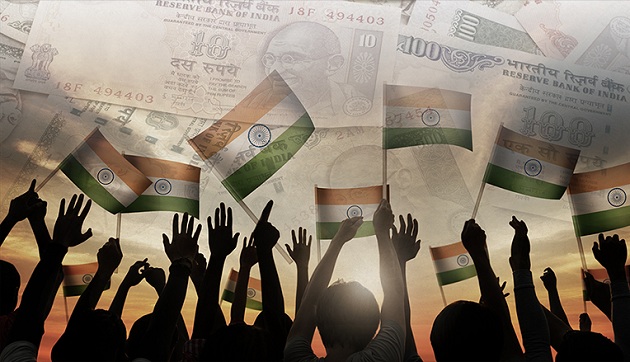India is a country of sharp economic inequalities. The situation in rural areas and the urban slums is really stark. Extreme poverty and inequalities on one side and impressive growth rate and positive structural reforms on the other bring us to push our reasoning a bit further.
Economists predict that by 2050, India would become the third largest economy in the world. However, although there was sharp improvement in economic performance, India faced a growth paradox. The contrast was evident as even basic amenities were not provided to a large proportion of its citizens. The benefits did not trickle down to the majority of the population. Crumbling infrastructure and social impoverishment were becoming major obstacles for the future development of India. In such a contradictory situation, whether the Indian growth is sustainable or not is the question that needed to be answered.
The richest one percent of Indians own 53 percent of the country’s wealth, the richest 5 percent own 68 percent of the country’s wealth, while the top 10 percent have 77 percent. At the other end of the pyramid, the poorer half of our countrymen jostles for four percent of the nation’s wealth. Income inequality in India may be at its highest level – a ratio that has risen rapidly over the last three decades. In the 1990s there were no Indians on Forbes’ list of billionaires; today there are more than 100.
Economic growth has mostly benefited the wealthiest 10 per cent of India’s population. The middle 40 per cent are somehow managing their both ends meet and social status and the rest 50 percent are have-nots.
In fact, inequality, poverty, unemployment, growth and happiness index are interrelated. Since sufficient employment could not be created, it is not possible to increase the income levels of most people. High population growth rate is another major reason of poverty.
Centre and State Government’s budget outlay is approximately 50 lakh crore, which largely comes from the scanty tax payers of the country – leaving them over-burdened and fuming over tax structure that prompt them to tax evasion and corruption – resulting in non-cooperation in country’s growth.
Another significant setback is that Government spending is rising, deficits are chronic, and accumulated debt is reaching dangerous levels. Hefty salaries and pensions is a burden on Government exchequer.
Indian government’s approach towards solving the problem is far from reality – for example mid-day-meal scheme may be any-thing but the ‘primary education’. Hundreds of government’s welfare schemes are just for the sake of it without achieving the desired goal. Several lakh crore is going in drain in the name of welfare.
The series of reforms initiated by the Narendra Modi government like demonetization and the goods and services tax can put the Indian economy on stronger track provided the people of India pay taxes honestly and the government levy the taxes rationally. Moreover, Government should initiate the program favoring honest tax payers and give them certain privileges as Indian citizens so that more and more people may join the tax payer list.
India’s growing inequality is a ‘big problem’ and that economic growth and human development can be pursued simultaneously. To solve this issue, further reforms should be implemented. A surgical strike is a must – where by Government need to formulate policies on the basis of the financial level of the people of India and not otherwise. Political maneuverability and populist economy should be defied at all levels or else India will take another decade to understand what went wrong.






